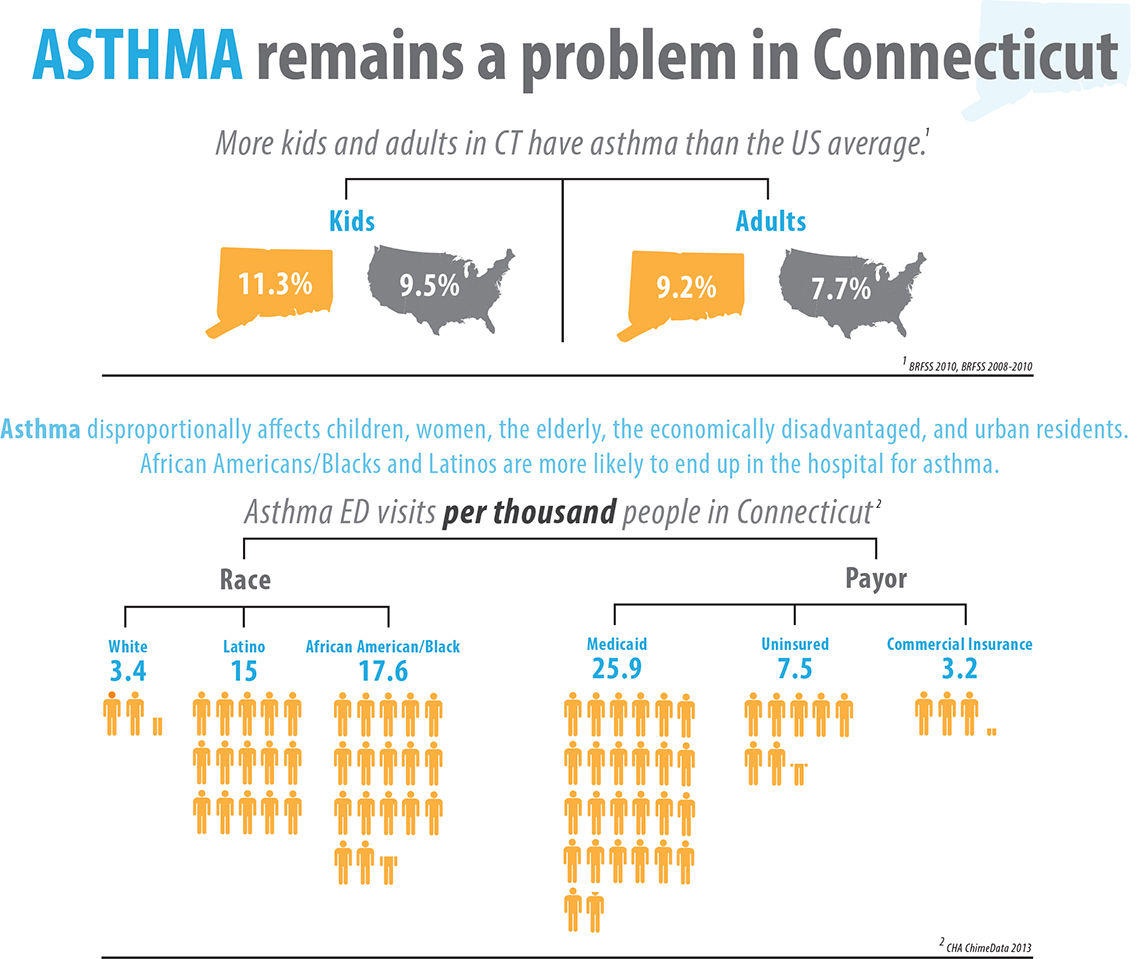Hospital emergency departments are a vital part of our health care systems. But they are not the best places for providing the ongoing care needed by those living with asthma.
Connecticut faces a number of challenges related to asthma, a potentially life-threatening chronic respiratory condition disproportionately affecting children, women, the elderly, urban residents, and the economically disadvantaged. The state’s asthma rates are higher than the national average (11.3 percent of Connecticut’s children have asthma, compared with 9.5 percent in the nation overall; for adults, the rates are 9.2 percent for the state versus 7.7 percent nationwide). Additionally, asthma-related visits to hospital emergency departments are disproportionately high for Connecticut’s black and Latino residents, and for its Medicaid recipients.
The elevated rate of asthma-related emergency department use is indicative of problems many residents experience in accessing primary care. According to Madeleine Biondolillo, MD, vice president for population health management at the Connecticut Hospital Association (CHA), “While appropriate clinical interventions are essential, asthma is also strongly affected by social determinants — conditions in homes, schools, neighborhoods, and communities.”
The Connecticut Asthma Initiative
With the help of a $100,000 grant from the Connecticut Health Foundation, CHA launched the Connecticut Asthma Initiative (CAI), bringing together hospitals, clinicians, and community partners to improve treatment and access, develop more effective models of care, and coordinate systems — schools, pharmacies, home visiting programs, doctors’ offices, and hospitals — to bridge the gaps that can lead to emergency department visits or hospitalizations.
The goals of the CAI are:
- Improve access to care by creating hospital-community partnerships with CHA’s 27 hospitals across the state, based on the needs and resources in each community. One hospital, for instance, has a nurse navigator in the emergency department who can make primary care provider appointments for asthma patients and coordinate transportation to appointments. Another hospital is working with school nurses to develop information they can use to educate teachers about the symptoms of asthma and about ways to reduce asthma triggers in the classroom.
- Achieve measurable reductions in asthma-related emergency department visits.
- Reduce disparities in asthma care and outcomes through a statewide asthma care model that becomes standard practice in health care and community systems.
To achieve these goals, the CAI is focusing on three interventions with patients as they leave hospital care:
- Providing an “asthma action plan” that patients can share with their health care providers and other relevant parties (e.g. family members, school nurses).
- Teaching patients how to use their inhalers and then having patients “teach back” the method to show they understand.
- Ensuring that patients have follow-up appointments with primary care providers and, as needed, connections to other support services.
“We also want to change the way people think about asthma,” says Dr. Biondolillo, “so that instead of feeling overwhelmed and relying on emergency care, they have good options for taking control of the condition, and the support they need to do so.”
